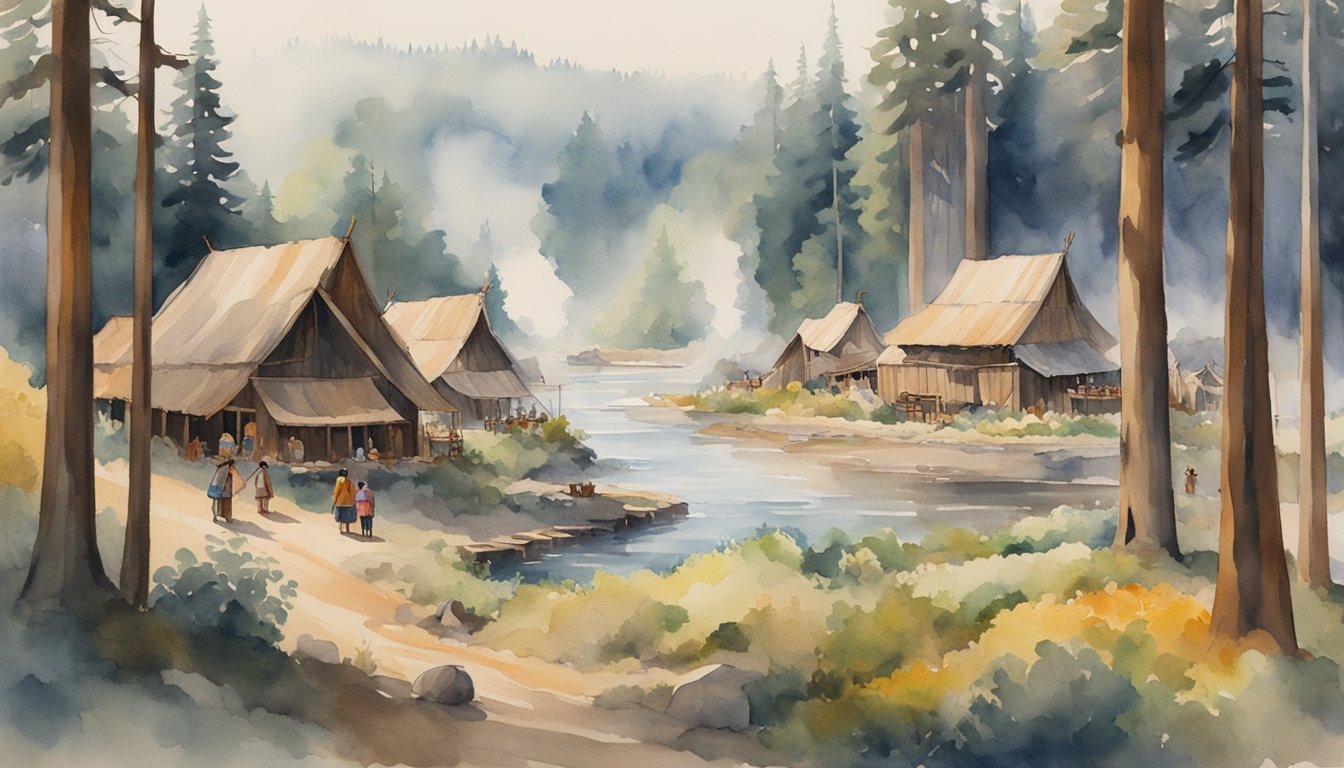History and Culture of California Native Americans
The rich tapestry of California’s history is intricately woven with the stories of its Native American inhabitants, ranging from diverse cultures and customs to significant challenges and changes following European contact.
Early Inhabitance and Societies
California’s landscape nurtured a remarkable variety of tribes, each with unique traditions. The Chumash inhabited coastal regions, thriving on fishing and crafting plank canoes. Inland, the Miwok and Yokut peoples focused on acorn gathering and deer hunting. The Modoc and Shasta tribes, among others like the Karok and Sinkyone, occupied the northern reaches of California, adapting their way of life to the forests and rivers.
Impact of European Contact
With the arrival of Spanish explorers and missionaries in the 16th and 17th centuries, indigenous societies faced dramatic changes. The establishment of missions by Spanish settlers initiated a tragic period of disease and violence that greatly reduced the Native population. Native Californians were subjected to labor under Spanish soldiers and missionaries, with many succumbing to epidemics. Despite such challenges, these communities persisted, retaining cultural aspects like basket weaving from the Pomo and beadwork from the Cahuilla.
Contemporary Native Californians
Today, Native Californians uphold a resilient legacy, endeavoring to preserve their cultures within the modern landscape. Numerous tribes, including the Hupa, Kumeyaay, and Yurok, strive for recognition and rights, often engaging with the government for land and cultural autonomy. They celebrate their heritage through festivals and ceremonies, and seek to educate others about their rich histories and current contributions to the state of California and North America.
Lifestyle and Environment

California’s Native Americans shaped their lifestyle by harmonizing with their environment, creating intricate social structures, and developing diverse subsistence practices.
Traditional Sustenance and Crafts
The indigenous peoples of California were adept at utilizing the rich natural resources for food and crafts. They gathered acorns and seeds which were staples in their diet, grinding them into meal for porridge and bread. Fishing was also important, with techniques involving specially made nets to catch salmon and other fish. Crafts included basket-weaving, using materials like tule, to create both functional and decorative pieces. These baskets were used for carrying, cooking, and storage, showcasing their skill and aesthetic sensibility.
Geography and Tribal Territories
California’s landscape is diverse, ranging from the Sierra Nevada mountains to arid deserts and fertile valleys. Tribes like the Miwok lived in the forested northern and central parts, while the Cahuilla inhabited the southern deserts. The Yokuts were prominent in the central valley, known for their intricate and richly endowed territories along rivers and streams, which provided ample resources for sustenance. In the far north, the Tolowa made their homes near the coast, exploiting marine and terrestrial resources, highlighting the adaptability to their respective environments.
Social Structure and Village Life
Social organization varied among tribes but typically featured well-defined structures. Villages were the central social units, often led by a chief or a council of elders. The Wintu, inhabiting the mountainous regions, structured their society around family groups known as “tuk”. Agricultural practices, hunting of deer and antelope, and fishing activities were often communal efforts, with tools and property shared among the village inhabitants. This cooperation reflected the deep social bonds and the critical role of communal cohesion in indigenous Californian culture.

